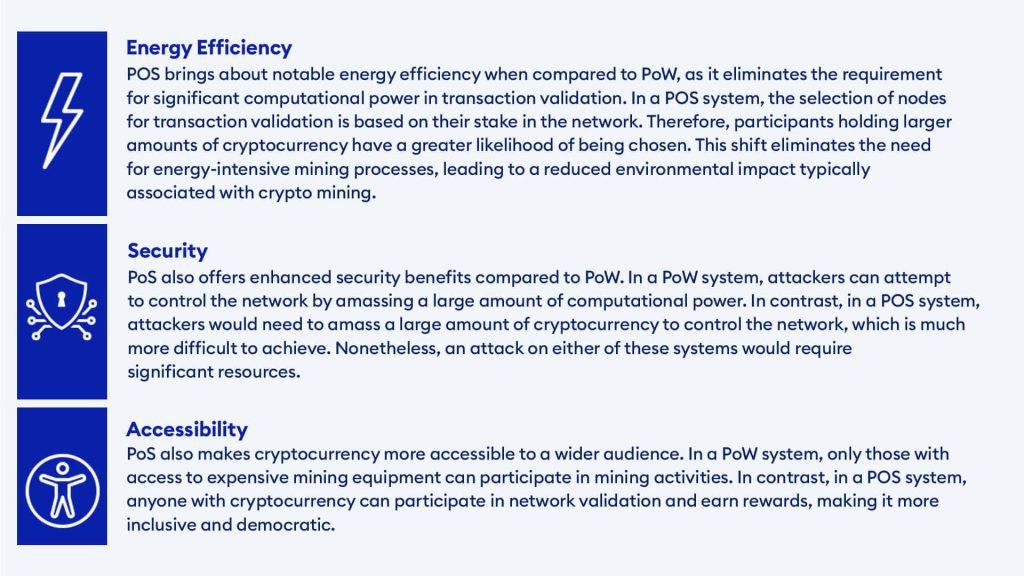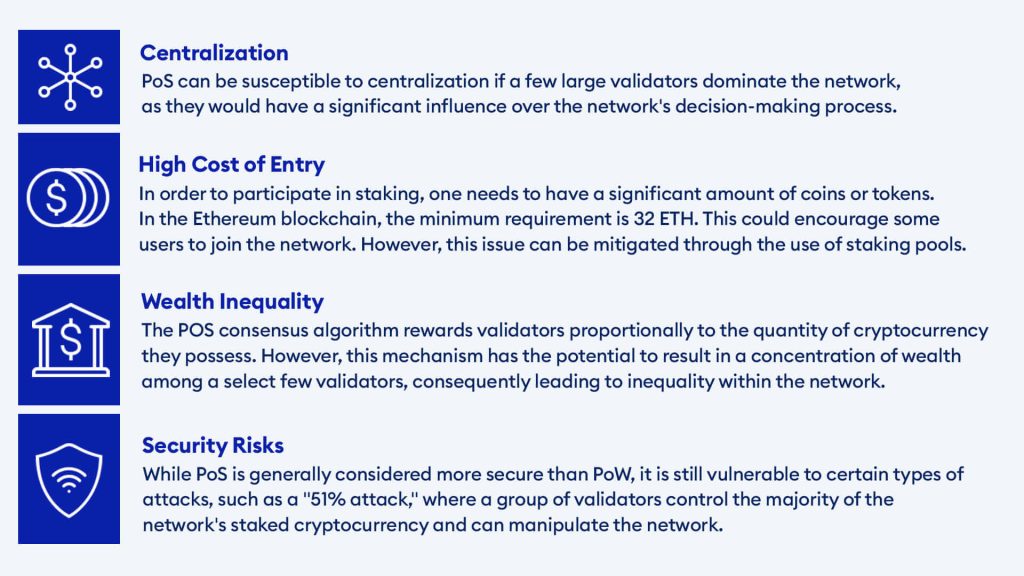In recent years, the popularity of cryptocurrencies has surged dramatically, attracting a growing number of individuals and businesses who are keen to invest in digital assets. However, concerns regarding the environmental impact of cryptocurrencies have emerged due to the significant energy consumption associated with conventional mining methods. For instance, in 2022 alone, bitcoin mining consumed an astonishing 160TWh of electricity and generated 86 million tons of CO2 emissions. Consequently, these concerns have spurred the development of new consensus algorithms, such as proof of stake (PoS), which offer a more sustainable approach to crypto mining. This article explores how PoS is leading the way toward the adoption of environmentally-friendly cryptocurrencies.
Introduction to Proof-of-Stake
In recent years, proof-of-stake (PoS) has emerged as a widely embraced consensus algorithm, primarily valued for its energy-efficient nature and enhanced security advantages. Unlike the traditional proof-of-work (PoW) approach, where miners must solve intricate mathematical problems to validate transactions and add blocks to the blockchain, PoS enables participants to validate transactions and earn rewards by holding a specific quantity of cryptocurrency. This innovative method eliminates the necessity for energy-intensive mining procedures, thereby reducing the environmental footprint associated with crypto mining. 1
How does it work?
The Merge
The Ethereum merge was a highly anticipated milestone in the realm of cryptocurrencies, marking Ethereum’s transition from a proof-of-work to a proof-of-stake system. This significant upgrade was successfully executed in September 2022, introducing the Beacon Chain as a new PoS consensus algorithm. With the implementation of this update, participants are now able to earn rewards by staking their Ethereum tokens, further enhancing the functionality and incentives within the Ethereum network 2
Advantages of Proof-of-Stake

Disadvantages of Proof-of-stake

Conclusion
Proof-of-stake is paving the way for sustainable crypto adoption by offering a more energy-efficient, secure, and accessible approach to crypto mining. By eliminating the need for energy-intensive mining processes, PoS can reduce the environmental impact of crypto mining and make cryptocurrency more inclusive and democratic. As more cryptocurrencies adopt PoS as their consensus algorithm, we expect a shift towards a more sustainable and responsible approach to crypto mining.
- Webhostinggeeks: webhostinggeeks.com[↩]
- Ethereum.org: ethereum.org[↩]
- Ethereum staking: https://ethereum.org/en/staking/[↩]


